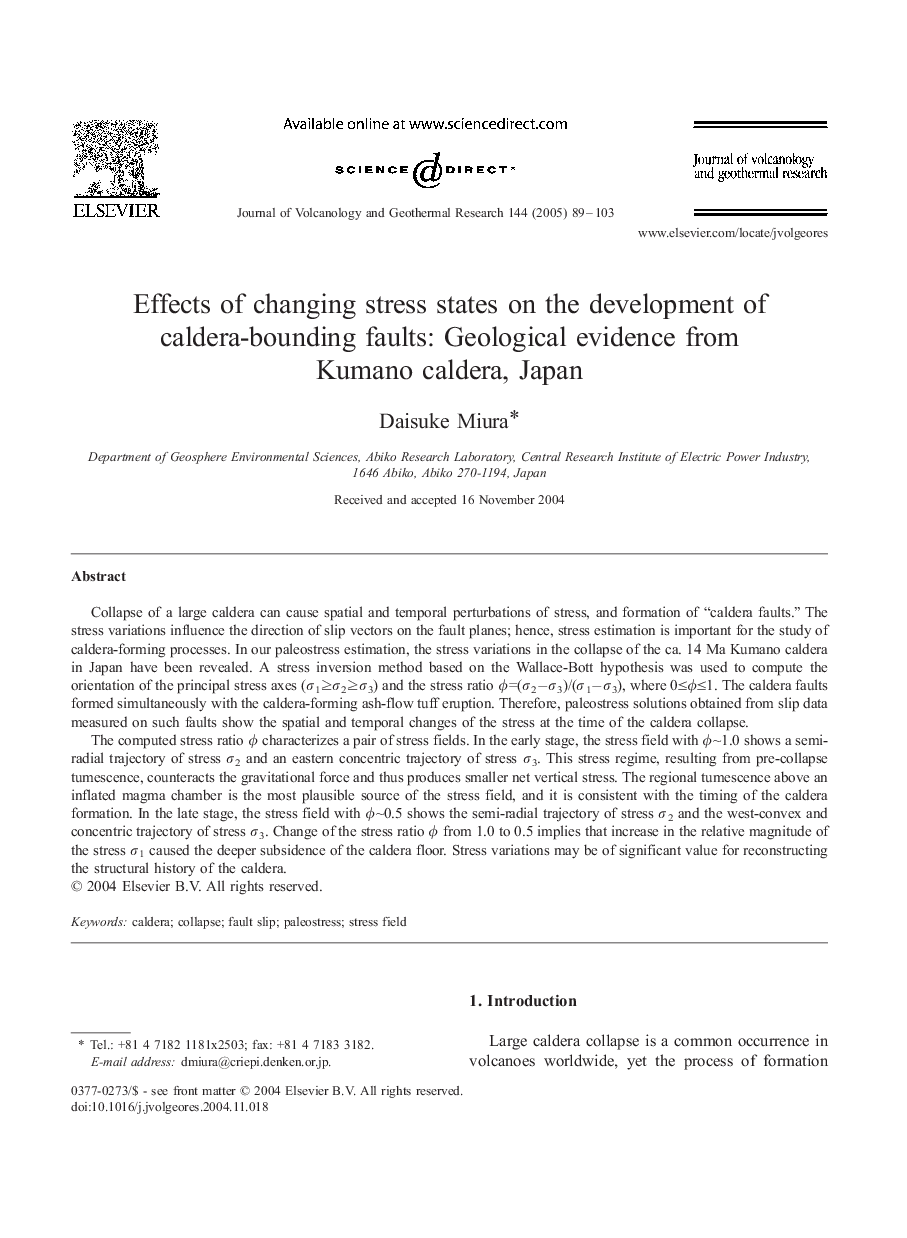| Article ID | Journal | Published Year | Pages | File Type |
|---|---|---|---|---|
| 9531120 | Journal of Volcanology and Geothermal Research | 2005 | 15 Pages |
Abstract
The computed stress ratio Ï characterizes a pair of stress fields. In the early stage, the stress field with Ïâ¼1.0 shows a semi-radial trajectory of stress Ï2 and an eastern concentric trajectory of stress Ï3. This stress regime, resulting from pre-collapse tumescence, counteracts the gravitational force and thus produces smaller net vertical stress. The regional tumescence above an inflated magma chamber is the most plausible source of the stress field, and it is consistent with the timing of the caldera formation. In the late stage, the stress field with Ïâ¼0.5 shows the semi-radial trajectory of stress Ï2 and the west-convex and concentric trajectory of stress Ï3. Change of the stress ratio Ï from 1.0 to 0.5 implies that increase in the relative magnitude of the stress Ï1 caused the deeper subsidence of the caldera floor. Stress variations may be of significant value for reconstructing the structural history of the caldera.
Related Topics
Physical Sciences and Engineering
Earth and Planetary Sciences
Geochemistry and Petrology
Authors
Daisuke Miura,
